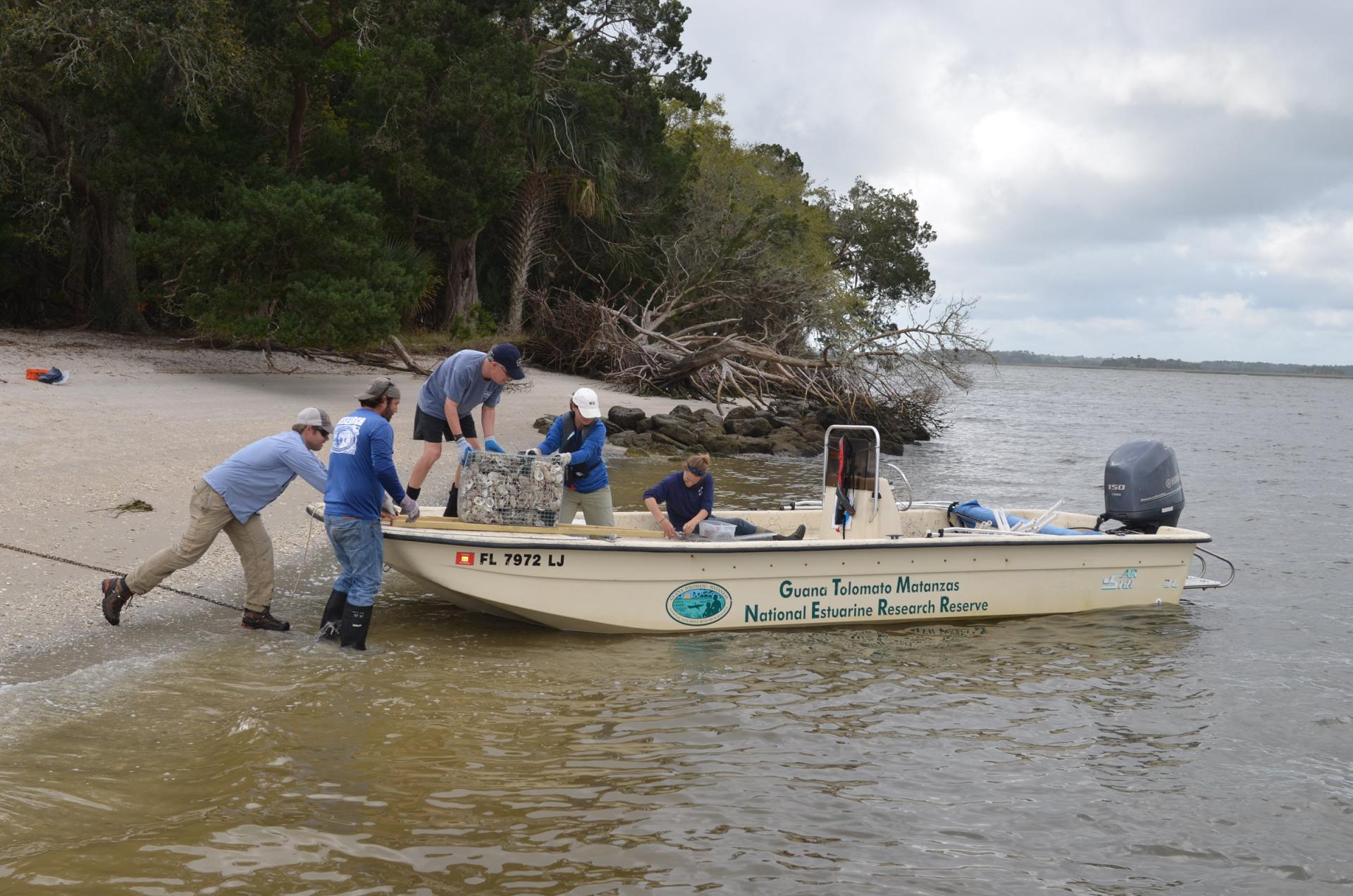Re-Engineering Living Shorelines for High-Energy Coastal Environments
Re-Engineering Living Shorelines for High-Energy Coastal Environments
Re-Engineering Living Shorelines for High-Energy Coastal Environments
Program: NERRS Science Collaborative
Program details » | All NERRS Science Collaborative projects »

Photo credit: Guana Tolomato Matanzas NERR
Why this work?
In estuaries worldwide, the loss of salt marshes and oyster reefs has been alarming, especially along high-energy coastlines. To dampen boat wake and wave stress, mitigate erosion, and restore oysters, managers have been building a more natural bank stabilization techniques — often referred to as living shorelines — adjacent to salt marsh edges. These efforts have been largely unsuccessful in achieving coastal management goals under the most destructive, high-energy conditions.
About this project
This project will test the efficacy of a new strategy for protecting coastal habitat in high-energy environments. The experimental study will integrate engineering and ecological approaches by deploying “gabion-breaks,” a hybrid method for building living shorelines to protect and restore coastlines. Over three years, boat wake and wave energy, oyster reef development, and salt marsh edge movement will be monitored along reaches of shoreline with and without gabion-breaks to measure their success in protecting and enhancing coastal habitat. The project team will incorporate their findings into training activities for restoration practitioners and coastal managers as well as interpretive exhibits for reserve visitors.
Research Products
- Journal article: Mitigating the erosional effects induced by boat wakes and living shorelines. Published in Sustainability, February 2018.
- Video: Living shorelines project: Installing gabion-breaks in the Florida inter-coastal waterway
- Manual: A manual for re-engineering living shorelines to halt erosion and restore coastal habitat in high-energy environments
Project Lead and Contact
Christine Angelini, University of Florida, Email: [email protected]
To learn more, view the project fact sheet (PDF)